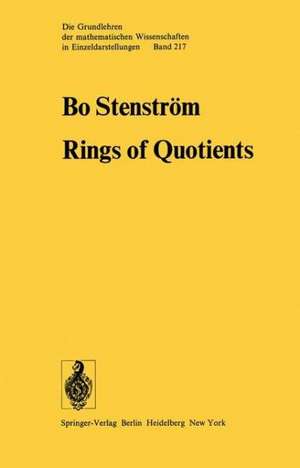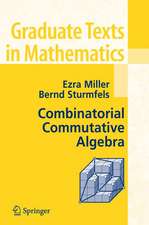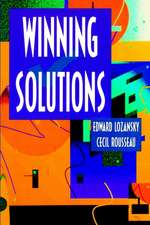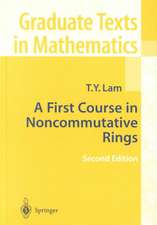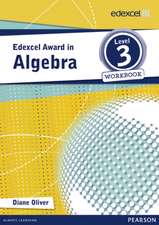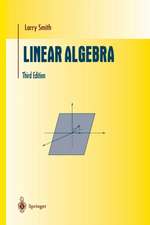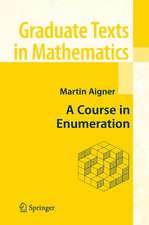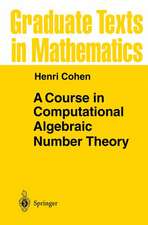Rings of Quotients: An Introduction to Methods of Ring Theory: Grundlehren der mathematischen Wissenschaften, cartea 217
Autor B. Stenströmen Limba Engleză Paperback – 22 dec 2011
Din seria Grundlehren der mathematischen Wissenschaften
-
 Preț: 353.84 lei
Preț: 353.84 lei - 24%
 Preț: 728.15 lei
Preț: 728.15 lei -
 Preț: 410.21 lei
Preț: 410.21 lei - 24%
 Preț: 587.87 lei
Preț: 587.87 lei - 17%
 Preț: 498.73 lei
Preț: 498.73 lei -
 Preț: 592.75 lei
Preț: 592.75 lei - 20%
 Preț: 692.49 lei
Preț: 692.49 lei - 24%
 Preț: 893.28 lei
Preț: 893.28 lei - 20%
 Preț: 824.73 lei
Preț: 824.73 lei - 24%
 Preț: 632.96 lei
Preț: 632.96 lei - 15%
 Preț: 596.69 lei
Preț: 596.69 lei - 15%
 Preț: 714.49 lei
Preț: 714.49 lei -
 Preț: 333.01 lei
Preț: 333.01 lei - 15%
 Preț: 473.16 lei
Preț: 473.16 lei -
 Preț: 356.49 lei
Preț: 356.49 lei -
 Preț: 484.43 lei
Preț: 484.43 lei - 15%
 Preț: 452.79 lei
Preț: 452.79 lei -
 Preț: 456.66 lei
Preț: 456.66 lei - 15%
 Preț: 708.75 lei
Preț: 708.75 lei -
 Preț: 423.08 lei
Preț: 423.08 lei - 15%
 Preț: 444.29 lei
Preț: 444.29 lei - 15%
 Preț: 527.79 lei
Preț: 527.79 lei - 15%
 Preț: 589.65 lei
Preț: 589.65 lei -
 Preț: 353.40 lei
Preț: 353.40 lei - 18%
 Preț: 727.66 lei
Preț: 727.66 lei -
 Preț: 387.96 lei
Preț: 387.96 lei - 15%
 Preț: 454.74 lei
Preț: 454.74 lei - 15%
 Preț: 481.03 lei
Preț: 481.03 lei -
 Preț: 464.55 lei
Preț: 464.55 lei -
 Preț: 348.77 lei
Preț: 348.77 lei -
 Preț: 362.04 lei
Preț: 362.04 lei -
 Preț: 488.12 lei
Preț: 488.12 lei - 15%
 Preț: 447.57 lei
Preț: 447.57 lei -
 Preț: 419.81 lei
Preț: 419.81 lei -
 Preț: 388.52 lei
Preț: 388.52 lei -
 Preț: 419.21 lei
Preț: 419.21 lei - 15%
 Preț: 581.01 lei
Preț: 581.01 lei -
 Preț: 497.75 lei
Preț: 497.75 lei -
 Preț: 360.53 lei
Preț: 360.53 lei -
 Preț: 387.75 lei
Preț: 387.75 lei -
 Preț: 419.81 lei
Preț: 419.81 lei - 18%
 Preț: 725.75 lei
Preț: 725.75 lei -
 Preț: 453.78 lei
Preț: 453.78 lei -
 Preț: 386.39 lei
Preț: 386.39 lei
Preț: 893.53 lei
Preț vechi: 1089.67 lei
-18% Nou
Puncte Express: 1340
Preț estimativ în valută:
170.99€ • 177.51$ • 142.58£
170.99€ • 177.51$ • 142.58£
Carte tipărită la comandă
Livrare economică 22 martie-05 aprilie
Preluare comenzi: 021 569.72.76
Specificații
ISBN-13: 9783642660689
ISBN-10: 3642660681
Pagini: 324
Ilustrații: 309 p.
Dimensiuni: 170 x 244 x 24 mm
Greutate: 0.52 kg
Ediția:Softcover reprint of the original 1st ed. 1975
Editura: Springer Berlin, Heidelberg
Colecția Springer
Seria Grundlehren der mathematischen Wissenschaften
Locul publicării:Berlin, Heidelberg, Germany
ISBN-10: 3642660681
Pagini: 324
Ilustrații: 309 p.
Dimensiuni: 170 x 244 x 24 mm
Greutate: 0.52 kg
Ediția:Softcover reprint of the original 1st ed. 1975
Editura: Springer Berlin, Heidelberg
Colecția Springer
Seria Grundlehren der mathematischen Wissenschaften
Locul publicării:Berlin, Heidelberg, Germany
Public țintă
ResearchCuprins
Notations and Conventions.- I. Modules.- § 1. Basic Definitions.- § 2. Sums and Products of Modules.- § 3. Finitely Generated Modules and Noetherian Modules.- § 4. Categories and Functors.- § 5. Exactness of Functors between Module Categories.- § 6. Projective and Injective Modules.- § 7. Semi-Simple Modules and Rings.- § 8. Tensor Products.- § 9. Bimodules.- § 10. Flat Modules.- § 11. Pure Submodules.- § 12. Regular Rings.- § 13. Coherent Rings.- Exercises.- II. Rings of Fractions.- § 1. The Ring of Fractions.- § 2. Orders in a Semi-Simple Ring.- § 3. Modules of Fractions.- § 4. Invertible Ideals and Hereditary Orders.- Exercises.- III. Modular Lattices.- § 1. Lattices.- § 2. Modularity.- § 3. Lattices with Chain Condition.- § 4. Distributive Lattices.- § 5. Continuous Lattices.- § 6. Pseudo-Complemented Lattices.- § 7. Closure Operators.- § 8. Galois Connections.- Exercises.- IV. Abelian Categories.- § 1. Equivalence of Categories.- § 2. Kernels and Cokernels.- § 3. Products and Coproducts.- § 4. Abelian Categories.- § 5. Pullbacks and Pushouts.- § 6. Generators and Cogenerators.- § 7. Functor Categories.- § 8. Limits and Colimits.- § 9. Adjoint Functors.- § 10. Morita Equivalence.- Exercises.- V. Grothendieck Categories.- § 1. Exactness of Direct Limits.- § 2. Injective Envelopes.- § 3. Finitely Generated Objects.- § 4. Locally Noetherian Categories.- § 5. The Krull-Remak-Schmidt-Azumaya Theorem.- § 6. Spectral Categories.- § 7. The Spectral Category of a Grothendieck Category.- Exercises.- VI. Torsion Theory.- § 1. Preradicals.- § 2. Torsion Theories.- § 3. Hereditary Torsion Theories.- § 4. Linear Topologies.- § 5. Gabriel Topologies.- § 6. Examples of Gabriel Topologies.- § 7. Stable Torsion.- § 8. TTF-Classes.- §9. ?-Divisible Modules.- Exercises.- VII. Hereditary Torsion Theories for Noetherian Rings.- § 1. Associated Prime Ideals.- § 2. Fully Bounded Noetherian Rings.- § 3. Topologies for a Fully Bounded Noetherian Ring.- § 4. Artin-Rees Modules and Stable Topologies.- § 5. Auxiliary Results on Commutative Localization.- § 6. The Topologies ?Mn for a Commutative Noetherian Ring.- Exercises.- VIII. Simple Torsion Theories.- § 1. The Jacobson Radical and Artinian Rings.- § 2. Semi-Artinian Modules and Rings.- § 3. Simple Torsion Theories.- § 4. Semi-Perfect Rings.- § 5. Perfect Rings.- § 6. Hereditary Torsion Theories for a Perfect Ring.- Exercises.- IX. Rings and Modules of Quotients.- § 1. Construction of Modules of Quotients.- § 2. ?-Injective Envelopes.- § 3. The Ring of Quotients is a Bicommutator.- § 4. The Lattice of Saturated Submodules.- § 5. ?-Invertible Ideals.- Exercises.- X. The Category of Modules of Quotients.- § 1. Giraud Subcategories.- § 2. Gabriel Topologies and Giraud Subcategories.- § 3. Rings of Quotients of Morita Equivalent Rings.- § 4. Representation of Grothendieck Categories.- Exercises.- XI. Perfect Localizations.- § 1. Epimorphisms of Rings.- § 2. Flat Epimorphisms of Rings.- § 3. Perfect Gabriel Topologies.- § 4. The Maximal Flat Epimorphic Ring of Quotients.- § 5. The Maximal Ring of Quotients as a Perfect Localization.- § 6. 1-Topologies and Rings of Fractions.- § 7. Finite Localizations.- § 8. The Endomorphism Ring of a Finitely Generated Projective Module.- Exercises.- XII. The Maximal Ring of Quotients of a Non-Singular Ring.- § 1. Standard Representation of Spectral Categories.- § 2. The Maximal Ring of Quotients.- § 3. The Maximal Ring of Quotients of a Boolean Ring.- § 4. The Lattice of EssentiallyClosed Ideals.- § 5. The Maximal Ring of Quotients of a Reduced Ring.- § 6. Flatness of the Maximal Ring of Quotients.- § 7. Imbedding Non-Singular Modules in Free Modules.- Exercises.- XIII. Finiteness Conditions on Mod-(A, ?).- § 1. Compact Lattices of Saturated Submodules.- § 2. ?-Noetherian Rings.- § 3. The Goldie Topology.- § 4. P-Noetherian Rings.- § 5. The Canonical Topology of a Krull Domain.- Exercises.- XIV. Self-Injective Rings.- § 1. The Endomorphism Ring of an Injective Module.- § 2. Self-Injective Rings and Annihilator Conditions.- § 3. Quasi-Frobenius Rings.- § 4. Self-Injective Maximal Rings of Quotients.- Exercises.- XV. Classical Rings of Quotients.- § 1. Semi-Prime Ideals and the Prime Radical.- § 2. Rings of Quotients of Quotient Rings.- § 3. Orders in a Semi-Primary Ring.- § 4. Noetherian Orders in an Artinian Ring.- § 5. Orders in Self-Injective Rings.- § 6. Rings of Quotients of Group Algebras.- Exercises.
